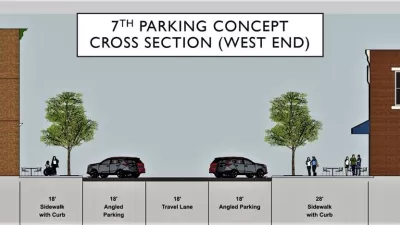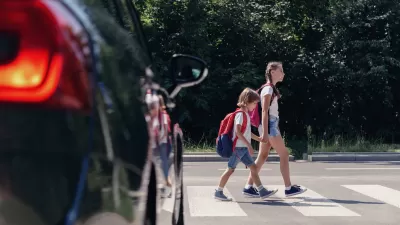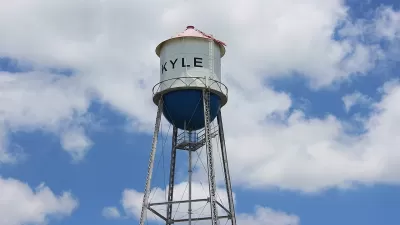West Palm Beach, Florida is undertaking a walkability study of its downtown; wide streets and a confusing mix of jurisdictions provide substantial challenges to the effort.
Eliot Kleinberg details the case of West Palm Beach, Florida, were the Downtown Development Authority (DDA) and the Community Development Agency recently hired Jeff Speck to undertake a walkability study of the city's downtown.
Plans to build a new, 400-plus-room hotel, across from the West Palm Beach's CityPlace and adjacent to the city's convention center, for instance, would be greatly improved if the street bifurcating the developments weren't eight lanes of vehicle-inhabited pedestrian disincentive. DDA Executive Director Raphael Clemente even has a personal anecdote about the dangerous conditions of the streets in downtown—he and his daughter were struck by a car making an illegal U-turn while they were riding their bikes in downtown last year.
The city, including Mayor Jeri Muoio, seem ready to address the problem at the street design level—rather than adding pedestrian or bicycle infrastructure like flyovers or tunnels. But reconfiguring the street will require coordination of a byzantine maze of jurisdictions. The aforementioned eight-lane street across from the convention center, for instance, is actually two separate 4-lane, 1-way boulevards: "Okeechobee and Lakeview — constitute a state road, State Road 704. Traffic lights are operated by Palm Beach County. The city owns part of the median. And the convention center hotel owns another part."
According to Kleinberg's report, Speck will present his findings of his walkability study at the end of May.
FULL STORY: Big divide separates CityPlace, new hotel

Planetizen Federal Action Tracker
A weekly monitor of how Trump’s orders and actions are impacting planners and planning in America.

Maui's Vacation Rental Debate Turns Ugly
Verbal attacks, misinformation campaigns and fistfights plague a high-stakes debate to convert thousands of vacation rentals into long-term housing.

San Francisco Suspends Traffic Calming Amidst Record Deaths
Citing “a challenging fiscal landscape,” the city will cease the program on the heels of 42 traffic deaths, including 24 pedestrians.

Amtrak Rolls Out New Orleans to Alabama “Mardi Gras” Train
The new service will operate morning and evening departures between Mobile and New Orleans.

The Subversive Car-Free Guide to Trump's Great American Road Trip
Car-free ways to access Chicagoland’s best tourist attractions.

San Antonio and Austin are Fusing Into one Massive Megaregion
The region spanning the two central Texas cities is growing fast, posing challenges for local infrastructure and water supplies.
Urban Design for Planners 1: Software Tools
This six-course series explores essential urban design concepts using open source software and equips planners with the tools they need to participate fully in the urban design process.
Planning for Universal Design
Learn the tools for implementing Universal Design in planning regulations.
Heyer Gruel & Associates PA
JM Goldson LLC
Custer County Colorado
City of Camden Redevelopment Agency
City of Astoria
Transportation Research & Education Center (TREC) at Portland State University
Jefferson Parish Government
Camden Redevelopment Agency
City of Claremont





























